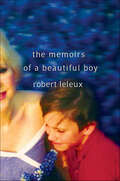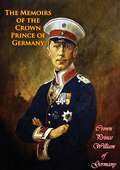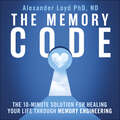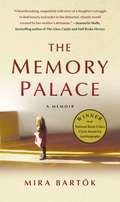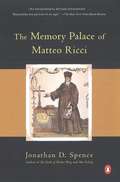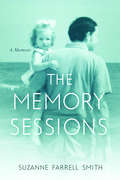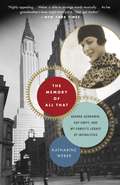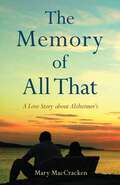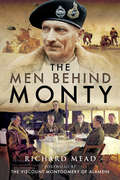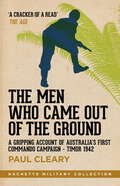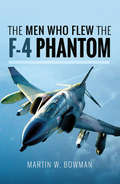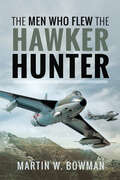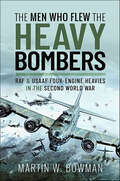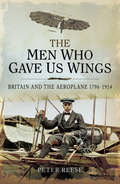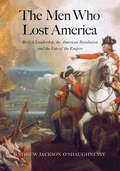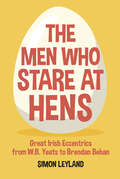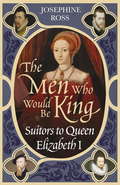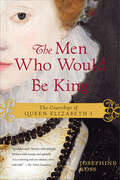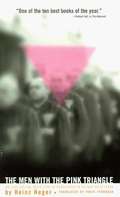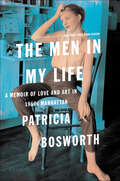- Table View
- List View
The Memoirs of a Beautiful Boy
by Robert LeleuxIn the Dear John letter Daddy left for Mother and me, on a Saturday afternoon in early June 1996, on the inlaid Florentine table in the front entry of our house, which we found that night upon returning from a day spent in the crème-colored light of Neiman's, Daddy wrote that he was leaving us because Mother was crazy, and because she'd driven me crazy in a way that perfectly suited her own insanity.In a memoir studded with delicious lines and unforgettable set pieces, Robert Leleux describes his East Texas boyhood and coming of age under the tutelage of his eccentric, bewigged, flamboyant, and knowing mother.Left high and dry by Daddy and living on their in-laws' horse ranch in a white-pillared house they can't afford, Robert and Mother find themselves chronically low on cash. Soon they are forced into more modest quarters, and as a teenaged Robert watches with hilarity and horror, Mother begins a desperate regimen of makeovers, extreme plastic surgeries, and finally hairpiece epoxies---all calculated to secure a new, wealthy husband. Mother's strategy takes her, with Robert in tow, from the glamorous environs of the Neiman Marcus beauty salon to questionable surgery offices and finally to a storefront clinic on the wrong side of Houston. Meanwhile, Robert begins his own journey away from Mother and through the local theater's world of miscast hopefuls and thwarted ambitions---and into a romance that surprises absolutely no one but himself. Written with a warmth and a wicked sense of fun that lighten even the most awful circumstances, The Memoirs of a Beautiful Boy is a sparkling debut.
The Memoirs of the Crown Prince of Germany
by Crown Prince William of GermanyBecause of his foppish and dandified appearance, emphasised by the cigarette holder he always used, the Crown Prince was regarded by the British during the Great War as a figure of ridicule, known to them as Little Willy. He was born in Potsdam on 6 May 1882, the eldest of Kaiser, and his memoirs begin with his childhood and early years and the development of his relations with his father, a somewhat remote figure…When war came he was given command of the Fifth Army with General Schmidt von Knobelsdorf as his chief of staff, and it was his army that launched the Verdun offensive in February 1916. As you read on the more it becomes clear that he was, in fact, far from his caricature. He was well aware of the enormous prestige attached to his person as son of the All-Highest and he did not hesitate to make use of it, in the political and military scene. He played no small part in the downfall of the Chancellor, von Bethman Hollweg, in 1917. In the aftermath of Ludendorff’s resignation he urged the Kaiser not to appoint Groener in his place, a man he regarded as a defeatist whom he disliked and mistrusted. He also maintained that the German army was not defeated at the Marne; it was withdrawn by its leaders. The battle was lost because the High Command gave it up as lost. When Moltke’s emissary, Lt Col von Hentsch, doing his rounds of the Army commanders ordering them to fall back, arrived at Fifth Army HQ, the Crown Prince refused point blank to comply without a written authority, which Hentsch did not have. And even when von Moltke himself turned up, struggling to repress his tears and demanded the instant withdrawal of Fifth Army, Wilhelm, after a lengthy argument still refused to go until he was ready. Moltke, apparently, left in tears. The imagination boggles at the thought of Haig tearfully imploring Rawlinson to obey orders, and the latter standing there, arms folded and saying: ‘Shan’t!’-Print ed.
The Memory Chalet
by Tony JudtA New York Times Book Review Notable Book of the Year "It might be thought the height of poor taste to ascribe good fortune to a healthy man with a young family struck down at the age of sixty by an incurable degenerative disorder from which he must shortly die. But there is more than one sort of luck. To fall prey to a motor neuron disease is surely to have offended the Gods at some point, and there is nothing more to be said. But if you must suffer thus, better to have a well-stocked head. " -Tony Judt The Memory Chalet is a memoir unlike any you have ever read before. Each essay charts some experience or remembrance of the past through the sieve of Tony Judt's prodigious mind. His youthful love of a particular London bus route evolves into a reflection on public civility and interwar urban planning. Memories of the 1968 student riots of Paris meander through the divergent sex politics of Europe, before concluding that his generation "was a revolutionary generation, but missed the revolution. " A series of road trips across America lead not just to an appreciation of American history, but to an eventual acquisition of citizenship. Foods and trains and long-lost smells all compete for Judt's attention; but for us, he has forged his reflections into an elegant arc of analysis. All as simply and beautifully arranged as a Swiss chalet-a reassuring refuge deep in the mountains of memory.
The Memory Code: The 10-minute solution for healing your life through memory engineering
by Alex LoydEvery one of us is the product of our past experiences. Good or bad, everything we do is informed by our memories - or more accurately, what we take away from those memories. But what if you could go back and rewrite the lessons of the past? What if you could turn a road block into a springboard? What if you could change your behaviour by changing your memories?Maybe it sounds too futuristic to be real, but it's both real and possible. Our past doesn't have to dictate our future. Losing weight, ending addiction, improving relationships, improving careers - you can really change these behaviours by altering your memories. In his groundbreaking new book The Memory Code, bestselling author Dr. Alexander Loyd teaches you how, revealing techniques he's been developing for more than 16 years.When we have a negative experience, we develop coping mechanisms to avoid that experience in the future. That can lead to behaviours like overeating, substance abuse, or poor lifestyle choices. By turning negative memories into positive ones, we can change the behaviours at the root of our problems. This process, called memory re-engineering, involves teaching our brains to re-imagine and re-code certain memories that trigger negative associations and the avoidance and coping mechanisms we've developed to deal with them. It means teaching ourselves to rethink those internal images so that instead of producing fear, anxiety and other negative emotions, they produce love, peace and positive associations.(P) 2019 Hachette Audio
The Memory Palace
by Mira BartokIn the tradition of The Glass Castle, two sisters confront schizophrenia in this New York Times bestselling poignant memoir about family and mental illness. Through stunning prose and original art, The Memory Palace captures the love between mother and daughter, the complex meaning of truth, and one family&’s capacity for forgiveness.*A Washington Post Best Book of the Year * *The National Book Critics Circle Award Winner for Best Autobiography* &“People have abandoned their loved ones for much less than you&’ve been through,&” Mira Bartók is told at her mother&’s memorial service. It is a poignant observation about the relationship between Mira, her sister, and their mentally ill mother. Before she was struck with schizophrenia at the age of nineteen, beautiful piano protégé Norma Herr had been the most vibrant personality in the room. She loved her daughters and did her best to raise them well, but as her mental state deteriorated, Norma spoke less about Chopin and more about Nazis and her fear that her daughters would be kidnapped, murdered, or raped. When the girls left for college, the harassment escalated—Norma called them obsessively, appeared at their apartments or jobs, threatened to kill herself if they did not return home. After a traumatic encounter, Mira and her sister were left with no choice but to change their names and sever all contact with Norma in order to stay safe. But while Mira pursued her career as an artist—exploring the ancient romance of Florence, the eerie mysticism of northern Norway, and the raw desert of Israel—the haunting memories of her mother were never far away. Then one day, a debilitating car accident changes Mira&’s life forever. Struggling to recover from a traumatic brain injury, she was confronted with a need to recontextualize her life—she had to relearn how to paint, read, and interact with the outside world. In her search for a way back to her lost self, Mira reached out to the homeless shelter where she believed her mother was living and discovered that Norma was dying. Mira and her sister traveled to Cleveland, where they shared an extraordinary reconciliation with their mother that none of them had thought possible. At the hospital, Mira discovered a set of keys that opened a storage unit Norma had been keeping for seventeen years. Filled with family photos, childhood toys, and ephemera from Norma&’s life, the storage unit brought back a flood of previous memories that Mira had thought were lost to her forever. The Memory Palace is a breathtaking literary memoir about the complex meaning of love, truth, and the capacity for forgiveness among family. Through stunning prose and original art created by the author in tandem with the text, The Memory Palace explores the connections between mother and daughter that cannot be broken no matter how much exists—or is lost—between them.
The Memory Palace of Matteo Ricci
by Jonathan D. SpenceIn 1577, the Jesuit Priest Matteo Ricci set out from Italy to bring Christian faith and Western thought to Ming dynasty China. To capture the complex emotional and religious drama of Ricci's extraordinary life, Jonathan Spence relates his subject's experiences with several images that Ricci himself created--four images derived from the events in the bible and others from a book on the art of memory that Ricci wrote in Chinese and circulated among members of the Ming dynasty elite. A rich and compelling narrative about a remarkable life, The Memory Palace Of Matteo Ricci is also a significant work of global history, juxtaposing the world of Counter-Reformation Europe with that of Ming China.
The Memory Sessions
by Suzanne Farrell SmithSuzanne Farrell Smith’s father was killed by a drunk driver when she was six, and a devastating fire nearly destroyed her house when she was eight. She remembers those two—and only those two—events from her first nearly twelve years of life. While her three older sisters hold on to rich and rewarding memories of their father, Smith recalls nothing of him. Her entire childhood was, seemingly, erased. In The Memory Sessions, Smith attempts to excavate lost childhood memories. She puts herself through multiple therapies and exercises, including psychotherapy, hypnotherapy, somatic experiencing, and acupuncture. She digs for clues in her mother’s long-stored boxes. She creates—with objects, photographs, and captions—a physical timeline to compensate for the one that’s missing in her memory. She travels to San Diego, where her family vacationed with her father right before he died. She researches, interviews, and meditates, all while facing down the two traumatic memories that defined her early life. The result is an experimental memoir that upends our understanding of the genre. Rather than recount a childhood, The Memory Sessions attempts to create one from research, archives, imagination, and the memories of others. Published by Bucknell University Press. Distributed worldwide by Rutgers University Press.
The Memory of All That: "George Gershwin, Kay Swift, and My Family's Legacy of Infidelities
by Katharine WeberThe Memory of All That is Katharine Weber's memoir of her extraordinary family. Her maternal grandmother, Kay Swift, was known both for her own music (she was the first woman to compose the score to a hit Broadway show, Fine and Dandy) and for her ten-year romance with George Gershwin. Their love affair began during Swift's marriage to James Paul Warburg, the multitalented banker and economist who advised (and feuded with) FDR. Weber creates an intriguing and intimate group portrait of the renowned Warburg family, from her great-great-uncle, the eccentric art historian Aby Warburg, whose madness inspired modern theories of iconography, to her great-grandfather Paul M. Warburg, the architect of the Federal Reserve System whose unheeded warnings about the stock-market crash of 1929 made him "the Cassandra of Wall Street." Her mother, Andrea Swift Warburg, married Sidney Kaufman, but their unlikely union, Weber believes, was a direct consequence of George Gershwin's looming presence in the Warburg family. A notorious womanizer, Weber's father was a peripatetic filmmaker who made propaganda and training films for the OSS during World War II before producing the first movie with smells, the regrettable flop that was AromaRama. He was as much an enigma to his daughter as he was to the FBI, which had him under surveillance for more than forty years, and even noted Katharine's birth in a memo to J. Edgar Hoover.Colorful, evocative, insightful, and very funny, The Memory of All That is an enthralling look at a tremendously influential--and highly eccentric--family, as well as a consideration of how their stories, with their myriad layers of truth and fiction, have both provoked and influenced one of our most prodigiously gifted writers.
The Memory of All That: A Love Story about Alzheimer's
by Mary MacCrackenFrom the award-winning bestselling author of books about autistic and learning-disabled children, Mary MacCracken, comes an engaging memoir of love, marriage—and Alzheimer&’s. Braving divorce to be together, Cal and Mary help each other overcome setbacks in their work. Cal&’s inventions are increasingly successful; Mary&’s first book is published to much acclaim, followed by three more. It seems nothing can stop them. Then Alzheimer&’s strikes. Always a fighter, Cal vows to beat his disease, while Mary finds ways to sustain their loving life together, devising ways to help Cal as he falters. She herself is helped by good doctors, social workers, and many friends—a whole community of care. Still, all the support in the world can&’t stop Cal&’s decline. He goes missing at night, flees his daycare program repeatedly, and must finally go to a memory unit. But even then, he and Mary share bits of happiness. In the end, they fail to beat Alzheimer&’s. Yet their story is also one of triumph, as their love persists all through and beyond their battle. Poignant and inspiring, The Memory of All That is a beautifully written love story that offers guidance and comfort to those dealing with dementia, or any of life&’s challenges.
The Men Behind Monty
by Richard MeadThe Men Behind Monty examines the role played by the staff in the victorious campaigns of Field Marshal Viscount Montgomery, Britain's most successful field commander since the Duke of Wellington.When Monty took command of Eighth Army in August 1942, he inherited the staff of his predecessor. He retained all the key members and most of them stayed with him not only from El Alamein to Tunis, but also in Sicily and Italy. When he took command of 21st Army Group in January 1944, many accompanied him to take up the most prominent positions on the HQ staff and the majority remained until the German surrender in May 1945.This fascinating work focuses not only on the senior officers responsible for the various staff branches, and notably on Monty's outstanding Chief of Staff, Freddie de Guingand, but also on his personal staff, the ADCs and personal liaison officers.The book sheds light on the work of the staff generally, and on their direct contribution to Monty's decisions, his sometimes difficult and controversial relationships with his superiors and allies.
The Men We Became: My Friendship with John F. Kennedy Jr.
by Robert T. LittellRob Littell was a freshman at Brown when he met JFK Jr. John opened up to Littell on a very personal level, revealing the nature of his relationships with his sister, cousins and his mother.
The Men Who Came Out of the Ground: A Gripping Account of Australia's First Commando Campaign
by Paul Cleary'This account . . . is breathtaking in its scope and riveting in its research' - Sydney Morning HeraldThe gripping story of a small force of Australian Special Forces commandos that launched relentless hit and run raids on far superior Japanese forces in East Timor for most of 1942.These Australians were the men of the 2/2nd Australian Independent Company - a special commando unit. Initially stranded without radio contact to Australia, the Japanese declared these bearded warriors `outlaws? and warned they would be executed immediately if captured. The Australians drawn mainly from the bush, were chosen for their ability to operate independently and survive in hostile territory. As film-maker Damien Parer said after visiting in Timor in late 1942, `these men are writing an epic of guerrilla warfare?.Expertly researched by Paul Cleary, who is fluent in Tetum, the main language of the indigenous group of East Timor, it also contains insightful black and white photos.'A cracker of a read' - The Age'Paul Cleary has brought to life one of the great success stories of World War II' - Daily Telegraph
The Men Who Flew the F-4 Phantom
by Martin W. BowmanThe Phantom was developed for the US Navy as a long-range all-weather fighter and first flew in May 1958, before becoming operational in 1961. The US Air Force then realized that the Navy had an aircraft that was far better than any tactical aircraft in their inventory and ordered 543 F-4C variants. There then followed a spate of orders from around the world. In Britain, it was ordered for the Navy and Air Force, but was modified to take the Rolls-Royce Spey turbofan. One of the Royal Navy's Phantoms stole the record for the fastest Atlantic crossing, a record that stood until taken by the remarkable Blackbird. Phantoms have been used in combat in many conflicts throughout its long service history. It was one of America's most utilized aircraft during the long Vietnam War and has been flown in anger in the Middle East by a number of different air forces.This is the perfect book for the general reader, enthusiast or modeler wishing to find a succinct yet detailed introduction to the design of the aircraft that has made history. It features a multitude of stories as relayed by USAF and Israeli airmen who actually flew this remarkable aircraft in wars in SE Asia and the Middle East, detailing just what it was like to fly the F-4 in combat. Many of the dozen or so chapters include combat testimonies of the Phantom design and durability in SE Asia and in the wars fought between Israel and her surrounding Arab enemies throughout the 1970s and beyond.The book also features a wealth of technical data along with stirring images that supplement the text perfectly, enhancing its visual appeal.
The Men Who Flew the Hawker Hunter
by Martin W. BowmanFeatures a wealth of first-hand testimony drawn from pilots who flew the outstanding Hawker Hunter.If ever there was a real pilot's aeroplane it was the Hunter, an outstanding multi-purpose aircraft which excelled in the roles of interceptor fighter, ground attack, reconnaissance, research vehicle and two-seater trainer, not to mention its dramatic displays in formation aerobatic performances. The Hawker Hunter is one of the world's greatest aircraft. For decades pilots have enthused about it, extolling the virtues of its smooth, aerodynamic lines, 4 x 30mm cannon, Rolls-Royce Avon engine, and its outstandingly honest handling characteristics combined with a lively performance. Who can ever forget the glory days of the unforgettable aerobatic displays with the Black Knights, Black Arrows, and Blue Diamonds? This book vividly recalls operations in Europe with Fighter Command and 2nd TAF, and in Cyprus, the Middle East and the Far East, where Hunters in the ground-attack role operated against rebels in Aden and Malaysia respectively. The Hunter was undoubtedly a classic thoroughbred of its time from the stables of one of the finest fighter manufacturers in the world. Here, we read the details of it's fascinating story, told from the perspective of the men who actually flew this outstanding aircraft through history.
The Men Who Flew the Heavy Bombers: RAF & USAAF Four-Engine Heavies in the Second World War
by Martin W. BowmanMartin Bowman’s considerable experience as a military historian has spanned over forty years, during which time he has amassed a wealth of material on the participation by RAF and Commonwealth and US 8th and 15th Air Force crews in the series of raids on the cities and oil transportation and industrial targets in the Third Reich, culminating in ‘Round-the-Clock’ bombing by the RAF, operating at night on the largely forgotten Stirling, the gamely Halifax and ultimately the more successful Lancaster, and the US 8th Air Force B-17 Flying Fortress and B-24 Liberator crews by day on a target list so long and wide ranging that it defies the imagination. Hundreds of hours of painstaking and fact-finding research and interviews and correspondence with numerous airmen and women and their relatives, in Britain, America and beyond has been woven into a highly readable and emotional outpouring of life and death in combat over the Third Reich as the men of the RAF and Commonwealth and American air forces describe in their own words the compelling, gripping and thought-provoking narrative of the Combined Bomber Offensive in World War Two, which resulted from the RAF nocturnal onslaught and the American unescorted precision attacks on targets throughout the Reich until the P-51 Mustang escort fighters enabled the 8th to assume the mantle of the leading bombing partner in theatre. February and March 1945 saw the most intense bombing destruction when Nazi defences were minimal or absent and the war was all but over. Final victory in May 1945 came at a high price indeed. Half of the U.S. Army Air Forces' casualties in World War II were suffered by Eighth Air Force, with in excess of 47,000 casualties, with more than 26,000 dead. RAF Bomber Command lost 55,573 men killed out of a total of 125,000 aircrew and 8,403 wounded in action while 9,838 became prisoners of war. RAF and American bomber crews could, therefore be forgiven for thinking they had won a pyrrhic victory; one that had taken such a heavy toll that negated any true sense of achievement, though, if nothing else, the human effort spent by RAF Bomber Command and the Eighth Air Force did pave the way for the Soviet victory in the east.
The Men Who Flew the Mosquito: Compelling Accounts of the 'Wooden Wonders' Triumphant World War Two Career
by Martin W. BowmanThe twin-engined Mosquito was one of the classic aircraft of the Second World War. Famously wooden-built, its graceful lines and powerful performance have made it into an airborne icon. Its operational versatility as a fighter, low level bomber and reconnaissance aircraft was unsurpassed. In this book we get the firsthand crew accounts of a selection of the actions and missions that the 'Mossie' undertook. These include audacious raids on Nazi HQs and Gestapo jails -real precision attacks carried out by ace fliers.
The Men Who Gave Us Wings: Britain and the Aeroplane, 1796–1914
by Peter ReeseWhy did the British, then the leading nation in science and technology, fall far behind in the race to develop the aeroplane before the First World War? Despite their initial advantage, they were overtaken by the Wright brothers in America, by the French and the Germans. Peter Reese, in this highly readable and highly illustrated account, delves into the fascinating early history of aviation as he describes what happened and why. He recalls the brilliant theoretical work of Sir George Cayley, the inventions of other pioneers of the nineteenth century and the daring exploits of the next generation of airmen, among them Samuel Cody, A.V. Roe, Bertram Dickson, Charles Rolls and Tommy Sopwith. His narrative is illustrated with a wonderful selection of over 120 archive drawings and photographs which record the men and the primitive flying machines of a century ago.As featured on BBC Radio Surrey and in Essence Magazine.
The Men Who Lost America: British Leadership, the American Revolution and the Fate of the Empire (The Lewis Walpole Series in Eighteenth-Century Culture and History)
by Andrew Jackson O'ShaughnessyQuestioning popular belief, a historian and re-examines what exactly led to the British Empire&’s loss of the American Revolution.The loss of America was an unexpected defeat for the powerful British Empire. Common wisdom has held that incompetent military commanders and political leaders in Britain must have been to blame, but were they? This intriguing book makes a different argument. Weaving together the personal stories of ten prominent men who directed the British dimension of the war, historian Andrew O&’Shaughnessy dispels the incompetence myth and uncovers the real reasons that rebellious colonials were able to achieve their surprising victory. In interlinked biographical chapters, the author follows the course of the war from the perspectives of King George III, Prime Minister Lord North, military leaders including General Burgoyne, the Earl of Sandwich, and others who, for the most part, led ably and even brilliantly. Victories were frequent, and in fact the British conquered every American city at some stage of the Revolutionary War. Yet roiling political complexities at home, combined with the fervency of the fighting Americans, proved fatal to the British war effort. The book concludes with a penetrating assessment of the years after Yorktown, when the British achieved victories against the French and Spanish, thereby keeping intact what remained of the British Empire.&“A remarkable book about an important but curiously underappreciated subject: the British side of the American Revolution. With meticulous scholarship and an eloquent writing style, O'Shaughnessy gives us a fresh and compelling view of a critical aspect of the struggle that changed the world.&”—Jon Meacham, author of Thomas Jefferson: The Art of Power
The Men Who Stare at Hens: Great Irish Eccentrics, from WB Yeats to Brendan Behan
by Simon LeylandHave you heard of Frederick Hervey, the atheist Bishop of Derry who hated church bells? What about Samuel Boyce, the poet who couldn’t afford trousers? Not even Mary Monckton, who once stole a live hedgehog from a dinner party? The Men Who Stare at Hens is a gentle meander down the byways and highways of Irish history, remembering the wonderful array of eccentrics that made their mark on their times.
The Men Who Would Be King: Suitors to Queen Elizabeth I
by Josephine RossThe story of the many suitors of Elizabeth I - one of the most eligible brides in 16th century Europe.From her childhood, overshadowed by the marital upheavals of her father Henry VIII, and the tragic first encounter with courtship, to the fantastical flirtations of her old age, Elizabeth refused to commit herself to any man. During the marriage negotiations, which spanned half a century, romance blended with diplomacy as one illustrious suitor after another endeavoured to ally himself to her in the most intimate of treaties. Sought after by some of the most powerful men in Europe, she knew her marriageable status to be one of her greatest assets. She played one suitor against another, exploiting her situation to the full both for England's profit and her pleasure. By turns she encouraged and eluded her pursuers, keeping alive hopes which she would never fulfil. Yet one man did come close to winning her. Ambitious, devious Robert Dudley, Earl of Leicester, suspected by many of having murdered his wife, was the most persistent of the suitors to the Queen, and though he never attained the prize he longed for, he was dearly loved by Elizabeth all her life. This is a fascinating look at the many suitors of Elizabeth I.
The Men Who Would Be King: Suitors to Queen Elizabeth I
by Josephine RossThe story of the many suitors of Elizabeth I - one of the most eligible brides in 16th century Europe.From her childhood, overshadowed by the marital upheavals of her father Henry VIII, and the tragic first encounter with courtship, to the fantastical flirtations of her old age, Elizabeth refused to commit herself to any man. During the marriage negotiations, which spanned half a century, romance blended with diplomacy as one illustrious suitor after another endeavoured to ally himself to her in the most intimate of treaties. Sought after by some of the most powerful men in Europe, she knew her marriageable status to be one of her greatest assets. She played one suitor against another, exploiting her situation to the full both for England's profit and her pleasure. By turns she encouraged and eluded her pursuers, keeping alive hopes which she would never fulfil. Yet one man did come close to winning her. Ambitious, devious Robert Dudley, Earl of Leicester, suspected by many of having murdered his wife, was the most persistent of the suitors to the Queen, and though he never attained the prize he longed for, he was dearly loved by Elizabeth all her life. This is a fascinating look at the many suitors of Elizabeth I.
The Men Who Would Be King: The Courtships of Queen Elizabeth I
by Josephine Ross“Splendid stuff, ‘history with attitude.’ Written with energy and aplomb.” —The Times (London)The colorful, often tempestuous courtships of Queen Elizabeth I of England (the “virgin Queen”) are brought to breathtaking life in The Men Who Would Be King, a thrilling, utterly fascinating popular history by Josephine Ross. The highly respected author of The Winter Queen and The Tudors, Ross captures all the splendors of the royal court, and all the delicious intrigues surrounding the romances of the powerful daughter of King Henry VIII during her glorious reign. The Men Who Would Be King is spirited British history, captivating and eminently readable, that will equally delight fans of historical nonfiction, Tudor aficionados, and anyone who loves the bestselling novels of Philippa Gregory.
The Men With the Pink Triangle: The True Life and Death Story of Homosexuals in the Nazi Death Camps
by David Fernbach Heinz Heger Klaus MullerThe Men with the Pink Triangle offers a glimpse of a seldom-discussed and barely explored history, a memory almost forgotten of homosexuals in the Nazi death camps.
The Men in My Life: A Memoir of Love and Art in 1950s Manhattan
by Patricia BosworthAcclaimed biographer Patricia Bosworth recalls her emotional coming of age in The Men in My Life: A Memoir of Love and Art in 1950s Manhattan.‘‘Deliciously vivid.’’ —New York Times Book ReviewProfound and powerful, this is Patricia Bosworth’s story of family, marriage, tragedy, Broadway, and art, featuring a rich cast of well-known literary and theatrical figures. Delivered in a series of vivid confessions about her remarkable journey into womanhood, she reveals how she defied repressive 1950s conventions while being shaped by the notable men in her life.Born into privilege in San Francisco as the children of famous attorney Bartley Crum and novelist Gertrude, Patricia and her brother Bart Jr. lead charmed lives until their father’s career is ruined when he defends the Hollywood Ten. The family moves to New York, suffering greater tragedy when Bart Jr. kills himself. However, his loving spirit continues to influence Patricia as she fights to succeed as an actress and writer.Married and divorced from an abusive husband before she’s twenty, she joins the famed Actors Studio. She takes classes with Lee Strasberg alongside Marilyn Monroe, Paul Newman, and others; she works on Broadway opposite Paul Muni, Helen Hayes, and Elaine Stritch; Gore Vidal and Elia Kazan become her mentors. Her anecdotes of theatre’s Golden Age have never been told before. At the zenith of her career, about to film The Nun’s Story with Audrey Hepburn, Patricia faces a decision that changes her forever.The Men in My Life is about survival, achieving your goals, and learning to love. It’s also the story of America’s most culturally pivotal era, told through the lens of one insider’s extraordinary life.
